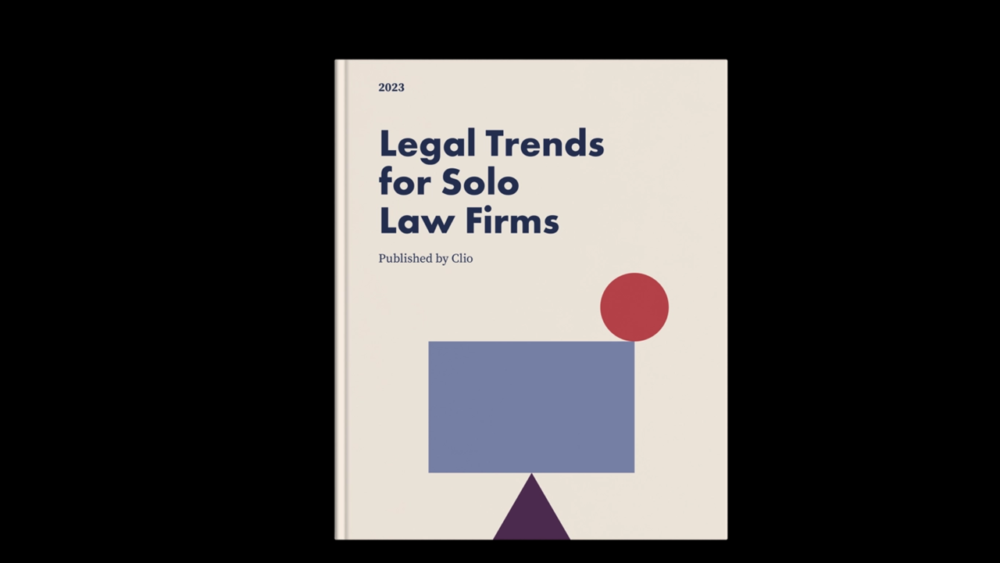As a solo myself, I can tell you that there is much to be said for practicing on your own – freedom and independence not least among them. In fact, during 2022’s “Great Resignation,” a third of lawyers who quit their jobs did so to start their own solo practices, according to Legal Trends for Solo Law Firms, a report published today by law practice management company Clio.
But there are also disadvantages to practicing alone and challenges unique to solo lawyers, as this latest report documents.
Using anonymized data from Clio customers, as well as surveys of legal professionals and consumers, the report looks at how solo law practices differ from those of lawyers at other law firms.
One clear takeaway is that there are both good and bad aspects to solo practice. In some regards, solos have distinct advantages over their counterparts at larger firms, but in other regards, solos face distinct challenges.
As I read through this report, I was struck by this contrast of the good and the bad of solo practice. So allow me to extract from the report and summarize some of what it reveals.
The good: Solos are on their own, which means they have more freedom to run their practices and their lives as they see fit, including being more innovative in implementing new forms of legal technology.
The bad: Solos are on their own, which means they bear sole responsibility for every detail of their practice.
The good: Solos are able to choose where and when to work and how much work to take on.
The bad: Solos are constrained by the fact that there are only so many hours in a day and one lawyer can only do so much.
The good: Solos are well situated to prioritize work-life balance.
The bad: They are much more likely than non-solo lawyers to work nights and weekends.
The good: Solos have maintained a stable level of business over the last two years and and business overall is up from 2019.
The bad: Solos struggle to bring in clients to their firms.
The good: The market for solos is strong relative to before the pandemic.
The bad: Solos are seeing only a small fraction of the growth in collected revenues compared to larger firms.
The good: Solos have lower overall costs of operation than non-solos.
The bad: Solos hourly rates are 20% lower than those of non-solo lawyers ($269 vs. $324) and their rates are not keeping pace with inflation.
The good: Solos hourly rates are rising.
The bad: Even though solos work as many hours a day as non-solos, they bill far fewer, with utilization rates 11% lower than non-solos (25% vs. 36%). On average, solos bill just two hours a day.
The good: Solos are 24% more likely to report having positive relationships with clients, in part because of the type of hands-on, personal nature of the services that many solos pride themselves on.
The bad: Solos struggle to find the time to put towards their clients.
The good: Solos are more likely to be happy with their professional lives (8% more) and their mental and emotional wellness (13% more).
The bad: Many solos at risk of poor mental health — and solos who work irregular hours are least likely to report mental and emotional wellness.
The good: Lawyers can potentially earn higher pay as solos. Because solos do not have to pay into a larger firm’s overhead and partner shares, they can potentially be more profitable.
The bad: Most solos aren’t satisfied with their earnings. Lawyers at larger firms are happier with where they are financially, with 23% happier with their personal income.
The good: Solos are ahead of the curve in cloud technology adoption, with 85% using cloud-based legal practice management software, compared to 55% of non-solos. Solos also are more likely to use online solutions for video conferencing, electronic payments, website design, e-signatures, and data storage.
The bad: As cloud technologies become more pervasive among solos, they are also becoming the norm among larger firms. That means that, to remain competitive, solos must find new efficiencies and automations to help them maintain their edge in legal innovation.
Those are quick takeaways from the report. There is much more information in the full report, so be sure to download it and check it out.



